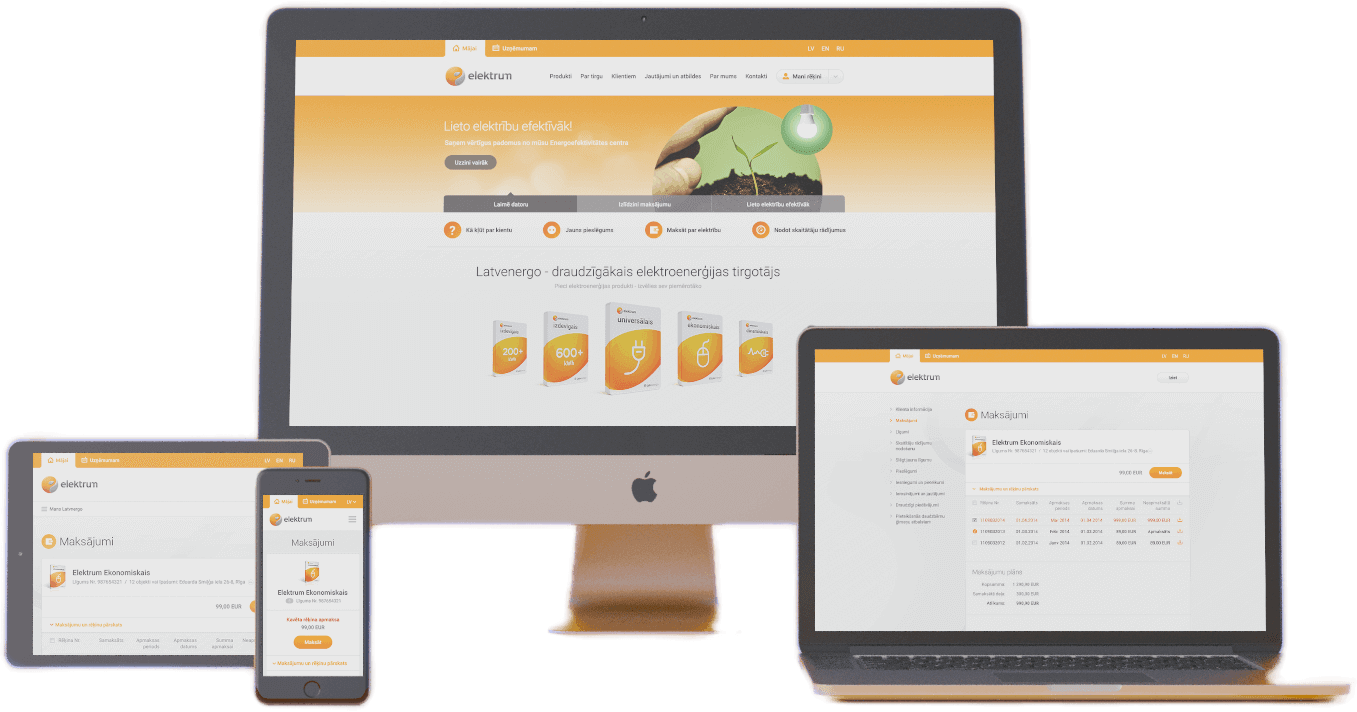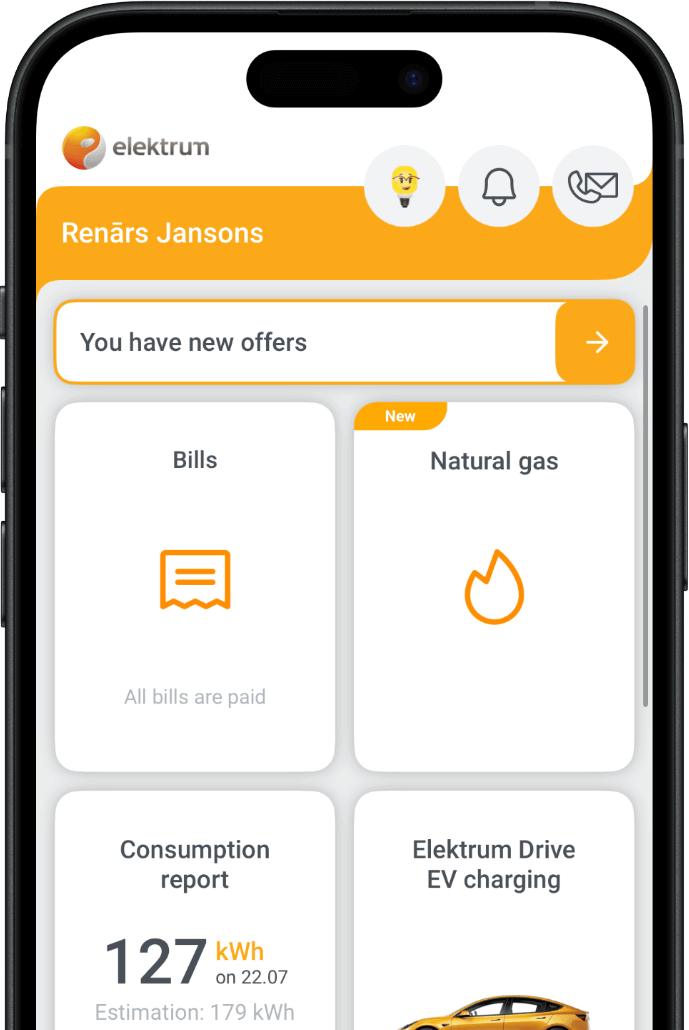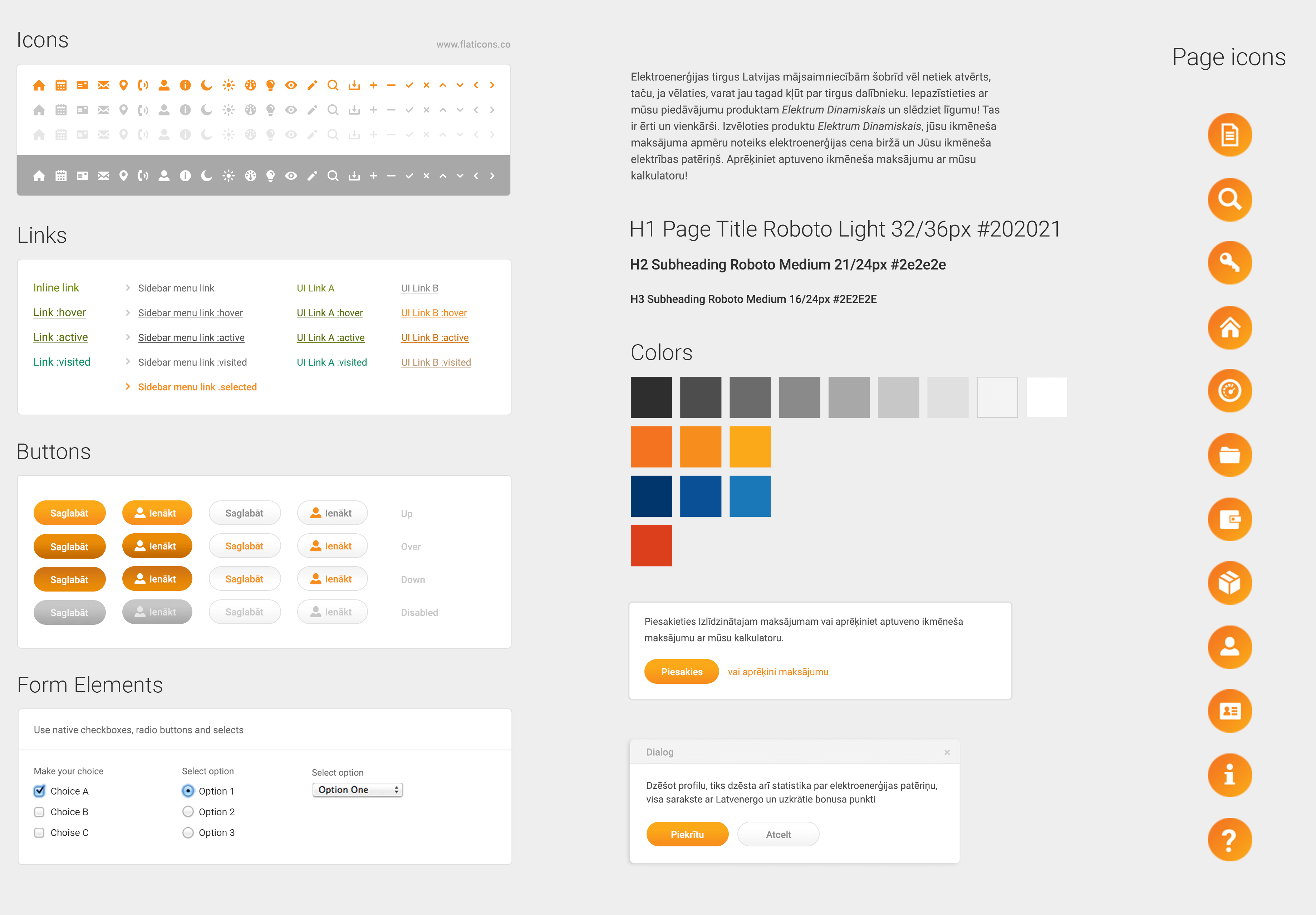The technical architecture of the portal is service-oriented, namely, it is integrated with the Latvenergo Oracle Utilities Customer Care and Billing Solutions system where all information about customers, payments and other customer related data are stored. Data exchange is managed via web services (XML, SOAP), i.e., the daily operations are supported by around 70 web services with various specifications.
To ensure customer authorisation and easy payment of bills, the portal is integrated with the leading online banking systems (Swedbank, SEB Banka, Nordea, DNB, Citadele, Norvik Banka). It is also possible to perform authorisation with an ID card.
The technical platform has been developed based on the Laravel PHP framework with our own content management system LEAF CMS. In order to ensure full functionality, around 150 000 source lines of code have been written.
The portal has a separate section for Latvenergo employees to provide both face-to-face and remote customer service.
The entire functionality of the portal has been described in the technical documentation, i.e., SRS (Software Requirement Specification) amounting to approximately 600 pages.
In order to meet the needs of around 475 000 portal users every month, we have helped to plan a scalable server architecture and we have adjusted the technical solution to a particularly large number of requests.
Since 2012, CUBE Systems and Latvenergo teams have been working in close co-operation in order to develop the Latvian, Lithuanian and Estonian portals and adapt them to the constantly changing market and customer needs. The development of elektrum.lv is described in a long-term plan which we are implementing together with the marketing, IT and customer service experts from Latvenergo by dividing the tasks into stages or sprints, each to be completed approximately within a month.
Latvenergo is the leading electricity trader in the Baltic States. The company has been operating since 1939, and currently provides services to more than 850 000 customers in Latvia, Lithuania and Estonia.









